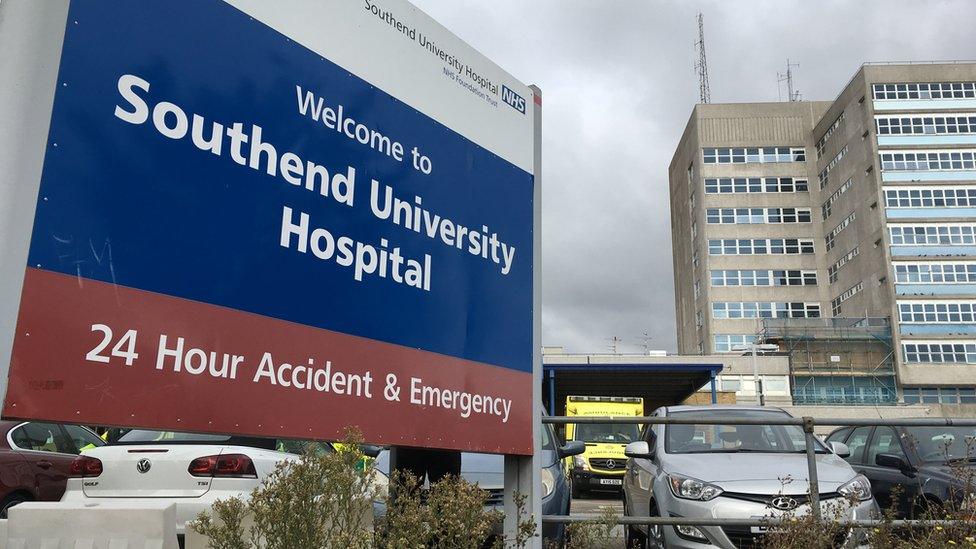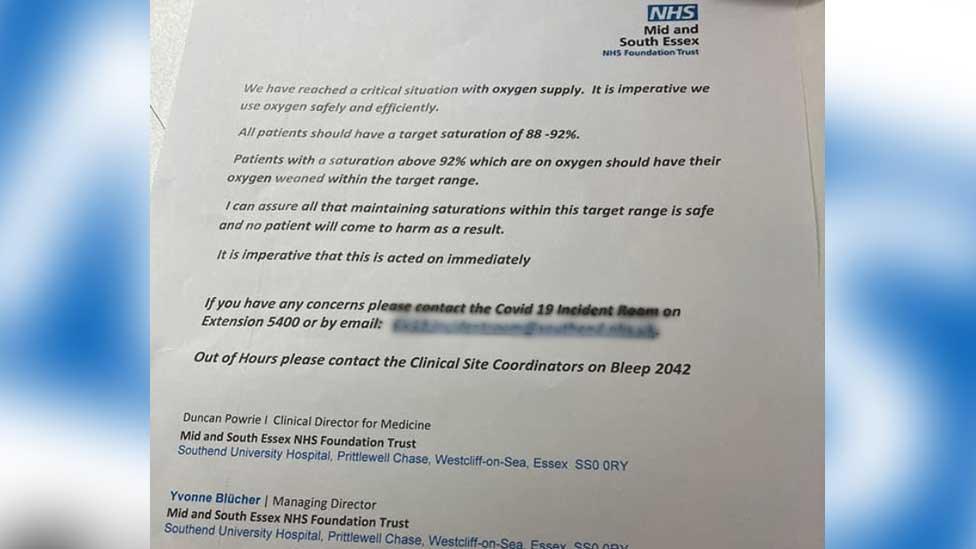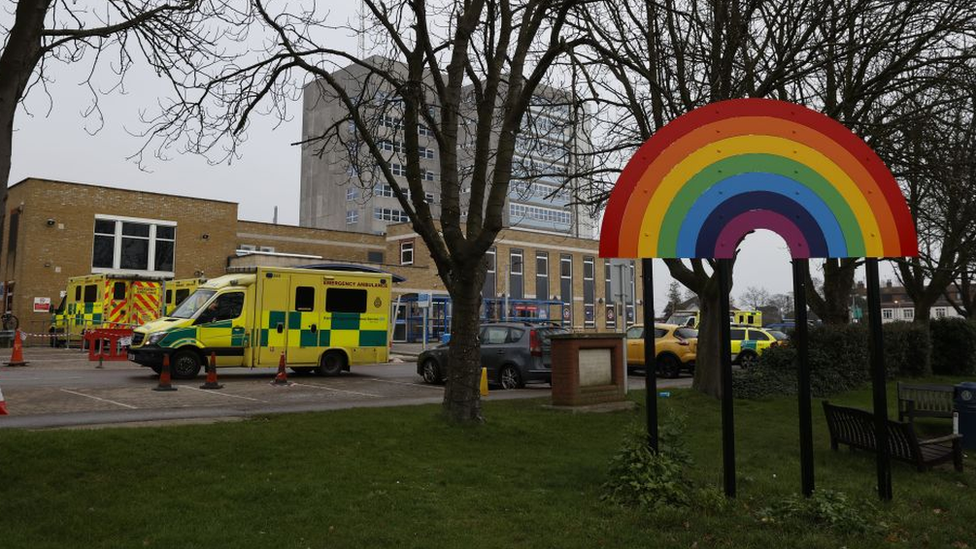Covid-19: Southend Hospital oxygen supply reaches 'critical' situation
- Published

Southend Hospital's oxygen supply has "reached a critical situation"
A hospital's oxygen supply has "reached a critical situation" due to rising numbers of Covid-19 infections.
A document shared with the BBC showed Southend Hospital has had to reduce the amount it uses to treat patients.
It said the target range for oxygen levels that should be in patients' blood had been cut from 92% to a baseline of 88-92%.
Hospital managing director, Yvonne Blucher, said it was "working to manage" the situation.

"We are experiencing high demand for oxygen because of rising numbers of inpatients with Covid-19 and we are working to manage this," she said.
"The public can play their part by staying home and, where they cannot, following the 'hands, face, space' advice to cut the spread of the virus."
In the document, from the Mid and South Essex Hospitals Foundation Trust, which has been shared with frontline NHS staff, the oxygen supply was said to have "reached a critical situation".
It said it was "imperative we use oxygen efficiently and safely" and states patients who are being fed oxygen and have an oxygen saturation of above 92% "should have their oxygen weaned within the target range", which is now 88-92%. This means very gradually reducing the saturation level.
It added that "maintaining saturations within this target range is safe and no patient will come to harm as a result".
GPs in Essex have told the BBC that the threshold for sending a patient to hospital for supplemental oxygen is if their oxygen saturation is at 92%. A level of 96-100% is deemed normal.

Chris Hopson, chief executive of NHS Providers which represents hospital trusts in England, said there was "huge pressure" on hospital oxygen stocks because giving patients extra oxygen was a "key part" of coronavirus treatment.
He said there were a number of hospitals where this happened in the first phase of coronavirus and over the past few weeks "similar things have happened" elsewhere.

Chris Hopson, chief executive of NHS Providers which represents hospital trusts in England, said there was "huge pressure on oxygen systems"
"This is the kind of problem that chief executives and trust leadership teams are having to solve day in, day out," he said.
"If you [a hospital] push your oxygen to an absolutely critical level, then the thing that you can't do is have the oxygen system break down... so effectively you will have to dial it down, in which case you will probably have to transfer patients to the nearest neighbouring hospital for a short period of time.
"I cannot tell you how much work has been done over the summer and autumn to ensure that people [hospital trusts] have been prepared for this... they knew they would come under pressure if there were to be further waves, as has now proved to be the case."
Essex has one of the highest rates of Covid-19 per 100,000 people in the country, with seven of the 14 council areas in the county in the top 20 most infected areas of England.


The Mid and South Essex Hospitals Foundation Trust said it was "imperative we use oxygen efficiently and safely"
Analysis: Rationing oxygen analysis
By Michelle Roberts, health editor, BBC News Online
News of oxygen issues is understandably worrying, but not unexpected. Tanks may be full, but flow is a problem.
Many people who are sick with Covid will need extra oxygen to help them breathe. As Covid admissions increase, it can put huge demand on a hospital's piped oxygen supply system to provide this high flow.
Hospital bosses have been planning for such scenarios for months, learning from experiences during the first wave of Covid when some trusts ran into difficulties.
Many wards have made improvements to their pipework in preparation for a very busy winter, but there is still a limit to what hospitals can provide.
When stretched to the maximum, other steps are needed, such transferring patients elsewhere or limiting how much oxygen is pumped to each patient.
Southend Hospital has taken this latter measure.
Although not ideal, it is not unsafe. Patients will be closely monitored and the trust hopes the situation will improve if new Covid admissions start to go down as people follow the stay at home lockdown rules.

Find BBC News: East of England on Facebook, external, Instagram, external and Twitter, external. If you have a story suggestion email eastofenglandnews@bbc.co.uk, external
Related topics
- Published6 January 2021
